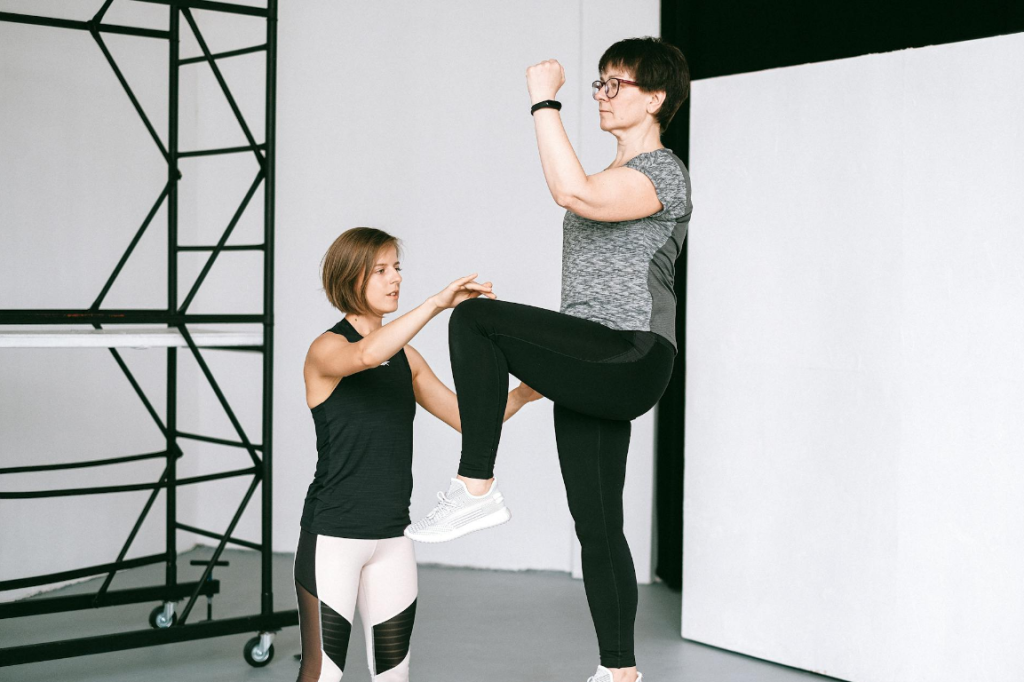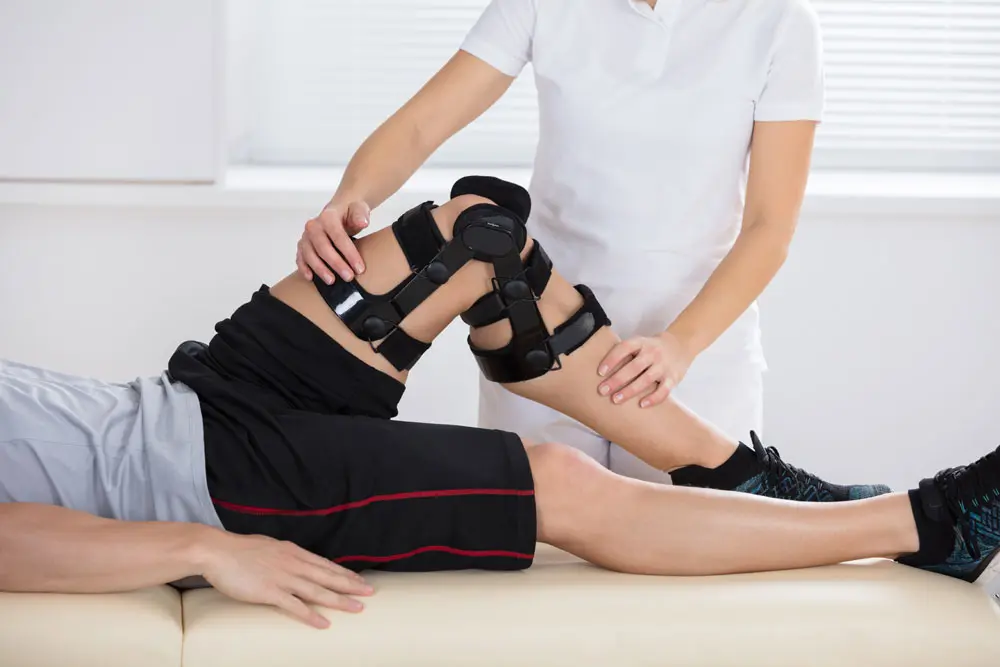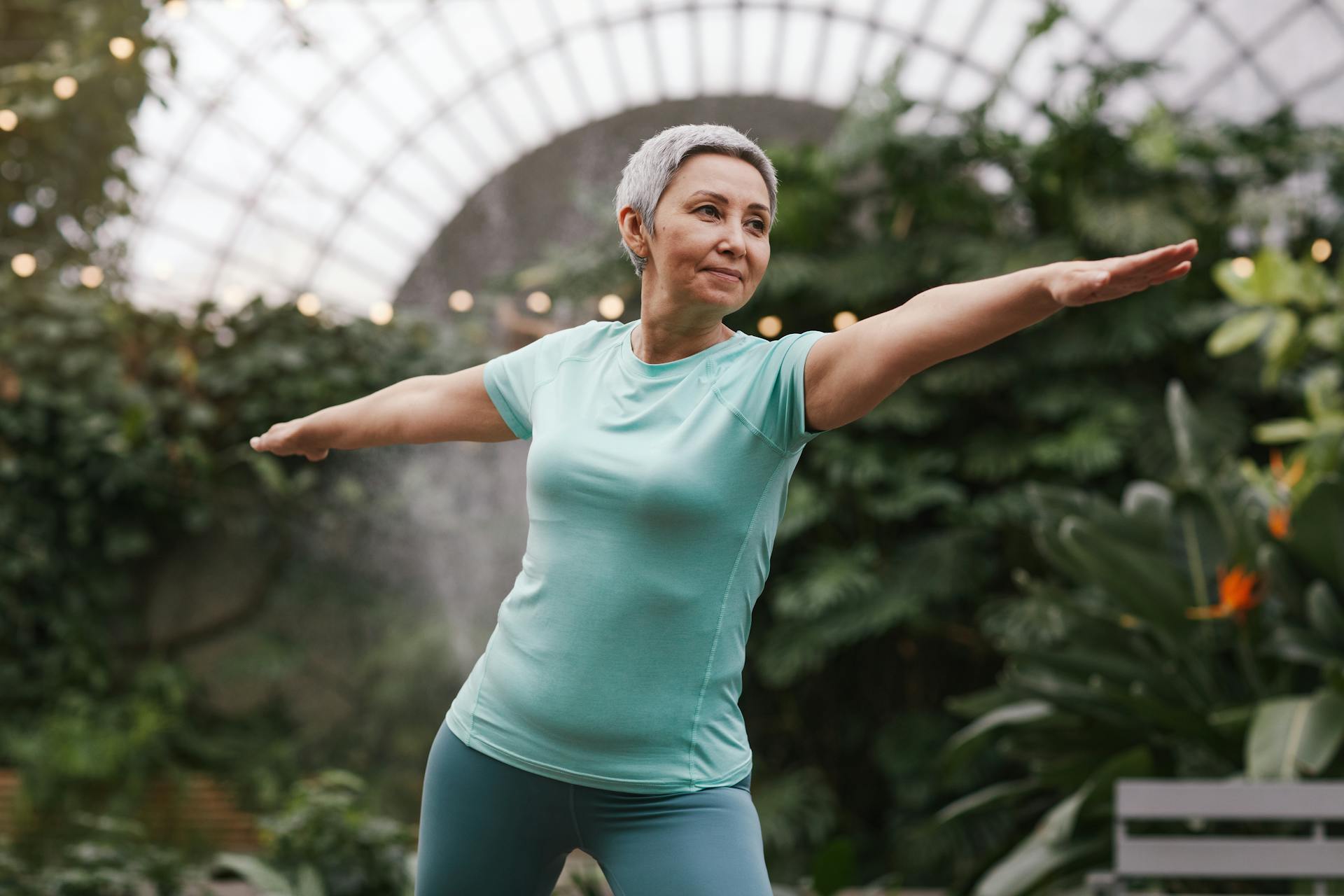Knee replacement surgery is a powerful solution for easing pain and restoring movement—especially for older adults living with the effects of long-term osteoarthritis. For those aged 75 and above, the goal of surgery often goes beyond just walking better; it’s about maintaining independence, preventing falls, and staying safely active in daily life.
But while surgery can do wonders for pain relief, recent research shows that balance and walking safety may still need extra care after a knee replacement—especially in older adults.

Many feel happier and more mobile post-surgery, but still experience unsteadiness or hesitancy when walking, especially at home or outside. A recent study confirms that this experience is not unusual—and highlights the importance of balance-focused recovery.
What the Study Looked At
Ibrahim Azzam and his colleague carried a research study among a group of older adults (average age 72.6) who underwent total knee replacement, published in 2024. In their study, they wanted to find out how surgery affected the way people walked—not just on a flat path in a quiet room, but while doing something else at the same time, like thinking or talking.
This is called dual-task walking. It reflects what we all do in real life: walking while having a conversation, thinking about what to make for dinner, or paying attention to our surroundings. For people over 75, these situations can become riskier—especially if balance or reaction time is reduced.
The participants were tested before surgery and again 4.5 months afterward.
What the Research Found
Pain Relief Was Significant
After surgery, most people had much less knee pain. This was one of the clearest benefits, and it’s what many patients hope for when they choose to have the operation.
Balance and Coordination Didn’t Improve Much
Although pain improved, balance and body awareness (called proprioception) stayed about the same after surgery. This was true even several months into recovery.
Multitasking While Walking Remained a Challenge
Walking while thinking—such as answering a question or counting backwards—remained difficult. The participants didn’t show major improvements in their walking speed or steadiness during these more mentally demanding tasks.
Fall Risk Remained Higher Than Expected
This is perhaps the most important takeaway. Even after surgery, many people—especially older adults—still had a higher risk of falling, particularly when distracted or moving quickly.
What Does This Mean for People Over 75?

This research confirms what many people already sense after surgery: feeling steady and confident again takes more than just fixing the knee.
Older adults often experience other age-related changes, such as slower reaction times, reduced muscle strength, and changes in vision or balance. When combined with the challenges of recovering from major surgery, these factors can increase the risk of falling—even months after the operation.
Falls can have serious consequences, especially for older adults. A single fall can lead to injury, hospitalisation, or even loss of independence. That’s why recovery plans must look beyond the joint itself and focus on restoring full-body stability and confidence.
Why Balance Matters So Much in Later Life
Balance isn’t just about staying upright—it’s about how your brain, muscles, joints, and inner ear all work together to keep you steady while moving. Over time, these systems naturally become less sharp, making balance more difficult—especially when doing two things at once.
In the study, improvements in dynamic balance (the kind of balance used when moving or turning) were linked to better walking performance. People who improved their balance were more likely to walk faster and more steadily, even when multitasking.
But those improvements don’t happen on their own. They require targeted, guided support—especially for individuals aged 75 and above, where natural recovery may take longer or be more limited.
What About Confidence?
Interestingly, even though participants in the study felt less pain, their confidence in their balance did not improve significantly. Many older adults still felt unsure or hesitant when moving, particularly in situations that involved quick turns, uneven ground, or walking outdoors.
This is important because fear of falling can lead to reduced activity, which in turn weakens muscles, stiffens joints, and creates a cycle of reduced mobility. Supporting confidence—through the right kind of physiotherapy and movement retraining—is just as vital as improving physical strength.
What Should Happen After Surgery?
For individuals aged 75+, a full recovery after knee replacement involves more than exercises for the knee. A good rehabilitation plan should also help:
- Improve overall movement and stability
- Restore safe walking patterns
- Build confidence during everyday tasks
- Reduce the risk of falls—at home and outside
And importantly, this kind of recovery should happen in the environment where falls are most likely to occur: at home.
How Physio2Home Supports Older Adults After Knee Replacement

Physio2Home offers expert, home-based physiotherapy designed especially for older adults recovering from surgery. We understand the unique challenges that come with aging, and we tailor our approach to help each person feel safer, stronger, and more confident—step by step.
Here’s how we can help:
- We come to you – No need to travel or arrange transport. We bring expert care directly to your doorstep.
- We assess your actual environment – Whether it’s stairs, garden paths, or kitchen corners, we help you move better where you live.
- We tailor your recovery plan – Based on your age, goals, current strength, and balance needs.
- We focus on fall prevention – By improving how you walk, turn, and respond to everyday distractions.
- We build confidence – One small, safe win at a time.
Our physiotherapists are experienced in working with people over 75 and understand that recovery is as much about reassurance and comfort as it is about movement.
A Message for Loved Ones and Caregivers
If you’re supporting an older family member after knee replacement surgery, this study is an important reminder: just because the pain is better doesn’t mean the person is fully recovered.
Signs that someone may still be at risk include:
- Hesitation when walking
- Needing to hold onto furniture for support
- Avoiding walking outside
- Difficulty turning or multitasking
- A recent stumble or near fall
If you’ve noticed any of these, additional support from a physiotherapist could make all the difference.
Take the Next Step Toward Safer Mobility
Recovering from a knee replacement at age 75 or older doesn’t have to feel uncertain or risky. With the right support, it’s possible to walk with confidence again—without fear of falling or hesitating at every step.
Let Physio2Home help you or your loved one feel safe, steady, and supported on the journey to better mobility.
📞 Call or WhatsApp us today at +44 7479 680744
🌐 Learn more or book online at www.physio2home.co.uk
Physio2Home – Expert physiotherapy for older adults, delivered with care and compassion in the comfort of your home.

